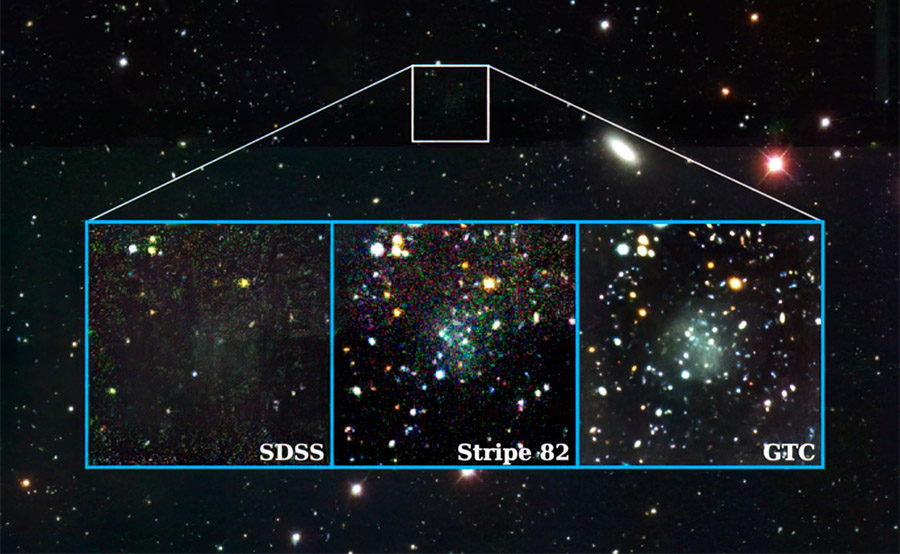Nube, the almost invisible galaxy which challenges the dark matter model
A group of astrophysicists led by Mireia Montes, a researcher at the Instituto de Astrofísica de Canarias (IAC), has discovered the largest and most diffuse galaxy recorded until now. The study has been published in the journal Astronomy & Astrophysics, and has used data taken with the Gran Telescopio Canarias (GTC) and the Green Bank Radiotelescope (GBT).

Nube is an almost invisible dwarf galaxy discovered by an international research team led by the Instituto de Astrofísica de Canarias (IAC) in collaboration with the University of La Laguna (ULL) and other institutions.
The name was suggested by the 5-year-old daughter of one of the researchers in the group, and is due to the diffuse appearance of the object. Its surface brightness is so faint that it had passed unnoticed in the various previous surveys of this part of the sky, as if it were some kind of ghost. This is because its stars are so spread out in such a large volumen that “Nube” (the Spanish for “Cloud”) was almost undetectable.
This newly discovered galaxy has a set of specific properties which distinguish it from previously known objects. The research team estimate that Nube is a dwarf galaxy ten times fainter than others of its type, but also ten times more extended than other objects with a comparable number of stars. To show what this means to anyone who knows a little astronomy, this galaxy is one third of the size of the Milky Way, but has a mass similar to that of the Small Magellanic Cloud.
“With our present knowledge we do not understand how a galaxy with such extreme characteristics can exist” explains Mireia Montes, the first author of the article, a researcher at the IAC and the ULL. (…)
Read more in the original article: IAC
🇵🇹 Versão portuguesa disponível aqui


Leave a Reply